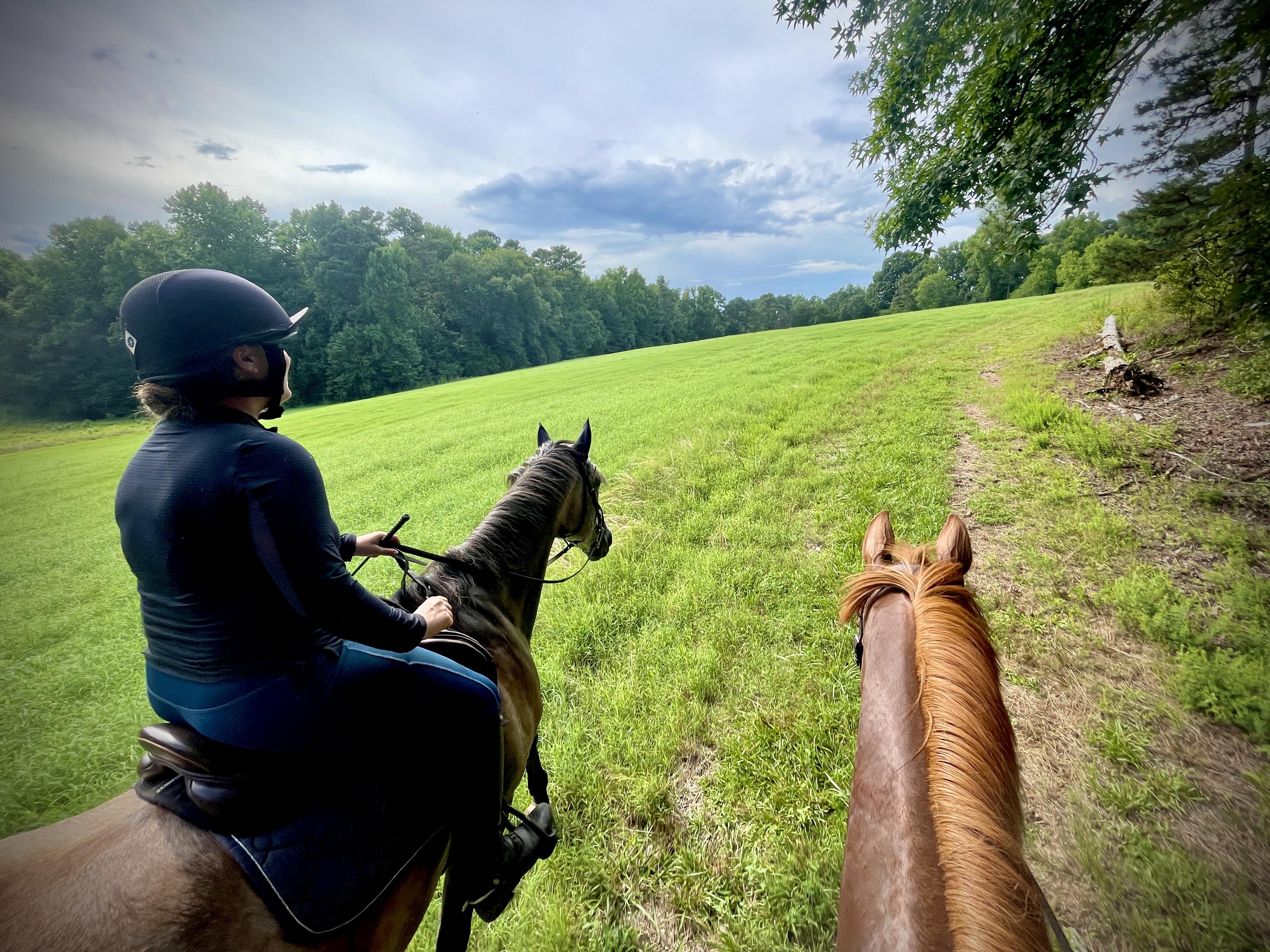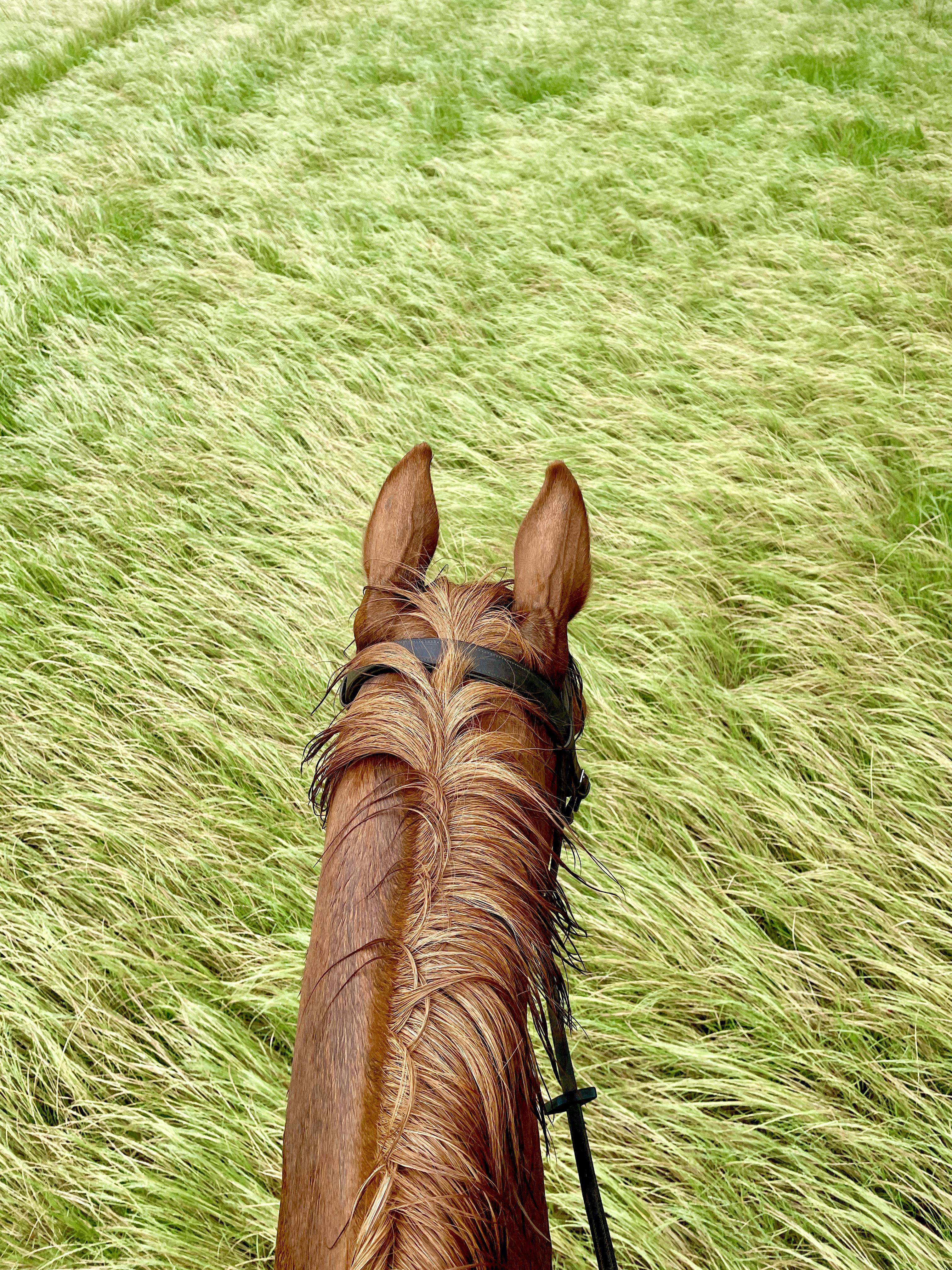
Thoroughbred Logic: Hit the Trails
Welcome to the next installment of Thoroughbred Logic. In this weekly series, Anthropologist and trainer Aubrey Graham, of Kivu Sport Horses, will offer insight and training experience when it comes to working with Thoroughbreds (although much will apply to all breeds). Come along for the ride as she offers her logic on the importance of trail riding.
The woods have always been an escape. I grew up hiking on the Appalachian Trail with my dad and my brothers every summer. That love of the forested paths translated into extensive trail riding (and some endurance) in High School — I mean, I guess it probably was one of the healthier teen escapism mechanisms. I’d hop on my big red Appendix and be gone for hours. Sure, I’d get myself into plenty of pickles, but always managed to find my way out and home in time for dinner.
I’m certain I had no idea about them at the time, but the benefits were numerous. I was simply glad to be in the woods — just my horse, myself, and sometimes, when I could swing it, my dog. Not much has changed there, except that now I recognize the perks both for the two and four legged critters.
Today, I use the trails more consciously — not just as an escape from a rough week, or really long year, but as a space for training, testing, and problem solving. Trails are a space to build trust, expand a horse’s “world view” and desensitize, condition, and train that essential response: ‘forward.’
Thoroughbreds make surprisingly good trail horses (despite their perception as being “hot,” sensitive or spooky). Even as young horses, Thoroughbreds who have been track trained have seen and experienced a wide array of objects, other horses, humans, sounds, environments, etc. that were outside of their control and their routine. While the expectation is that they might be excitable in new situations, I have found that they take the challenge and training opportunities of the trails in stride and gain much-needed confidence with each outing.
Crafty (JC Crafty Charger) makes a good example here. Until two weeks ago, he had not been off-property since September of last year due to necessary stall rest for a stress fracture. While I have been legging him up at home in the arena and on the hills in the field, we both needed a break. A super rainy morning might not have been an ideal day for a trail ride, but meh. Once it is in my head, it is happening. So we hauled to Ashland, tacked up inside my rig (did I mention I love my 2+1?) hopped on and headed out (Walker the dog got to sleep in the truck).
I trust Crafty. Kinda. Really I should say, I know Crafty’s reactions well and I trust my seat… but in the horse world, these are commonly synonymous. So, we hacked out on the buckle, his ears alert and forward, but not reactive. The woods brought good desensitization training that day as we encountered numerous deer, turtles, and birds. Thankfully, no turtles were squished (that was close), and all of the deer respectfully kept their distance. His brain switched on, and the ride saw him grow braver and more sure of himself.
Conditioning wise, the trails provided both of us the needed excuse to walk for nearly an hour and then retrace our steps at the trot. The uneven ground, hills and dips, roots and bogs resulted in varied terrain and therefore incidental strength and agility training for both large and small muscle groups. No cavalettis needed. Just walking along, he had worked up a good sweat.
At home, my horses get a walk warmup, but it is rarely a full hour. There are too many rides, too many goals, and not enough daylight. Arena work is often focused, pointed, and when successful, short and sweet. Part of the beauty of hitting the trails is that time elongates, slows, and is in and of itself a benefit.
And beyond all the mental and physical benefits that come with some time for introspection and just being with your horse in the woods, there is the seriously important training point of go forward. New environments are great places to train ‘forward,’ and test how far your horse has come. Oh, that’s scary… great. (closes leg). Go on, go forward.

Crafty’s courage used to waver over fences, but trust, experience and ample out-of-arena experiences have helped him build his jumping confidence. Photo by the Kivu Team.
Whether or not a Thoroughbred was fast on the track rarely matters in second careers. That said, their ability and willingness to go forward does. Put simply, forward is pretty much always the right answer.
This has been a tricky thing for Crafty to learn. When he arrived last year, he toted the “dangerous” label and was a ball of nerves and had a terrible sit, pop-up and spin left. While there was always a lot of (com)motion when Crafty encountered something concerning, very little of that energy went even close to forward. The trails and their streams, bridges and spooky areas have provided super sets of teaching moments. Traversing those streams, in particular, has presented a solid training moment and test of forward for this handsome redhead.
Such creek crossing has, in fact, been in the works for nearly a year. Last summer, Crafty and I hauled out to the trails and met up with a good friend, Caroline Templeton and her young Thoroughbred, Loki. Loki is a saint and was unfazed by water of any kind, least of all the first small stream crossing on the trail. Crafty, on the other hand glued himself to Loki, and after quite a bit of sideways and backwards effort, leapt across. OK, we’ll take the leap as a win and come back and train the quiet crossing another time.

Caroline and Loki joined Crafty and me for a hack out at Ashland last year — helping to build Crafty’s water confidence. Photo by author.
This recent time in the trails, when facing the same creek, now in flood stages, Crafty hesitated, cocked an ear, and when asked to go forward, thought about not, then thought about jumping across. After one more “let’s go,” he instead stepped quietly into the moving water and walked to the other side. Well done, kid — that was both forward and progress.
Overall, the cross-training and exposure that trails provide are largely unmatched. At the end of the day, if nothing else, trails change up the routine and provide a clear and easy way for a horse and rider to grow their confidence — in themselves respectively and in each other. And yes, they are still an excellent escape…










